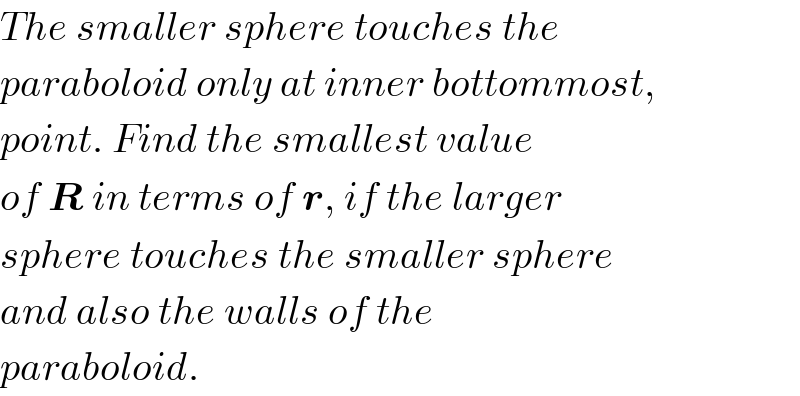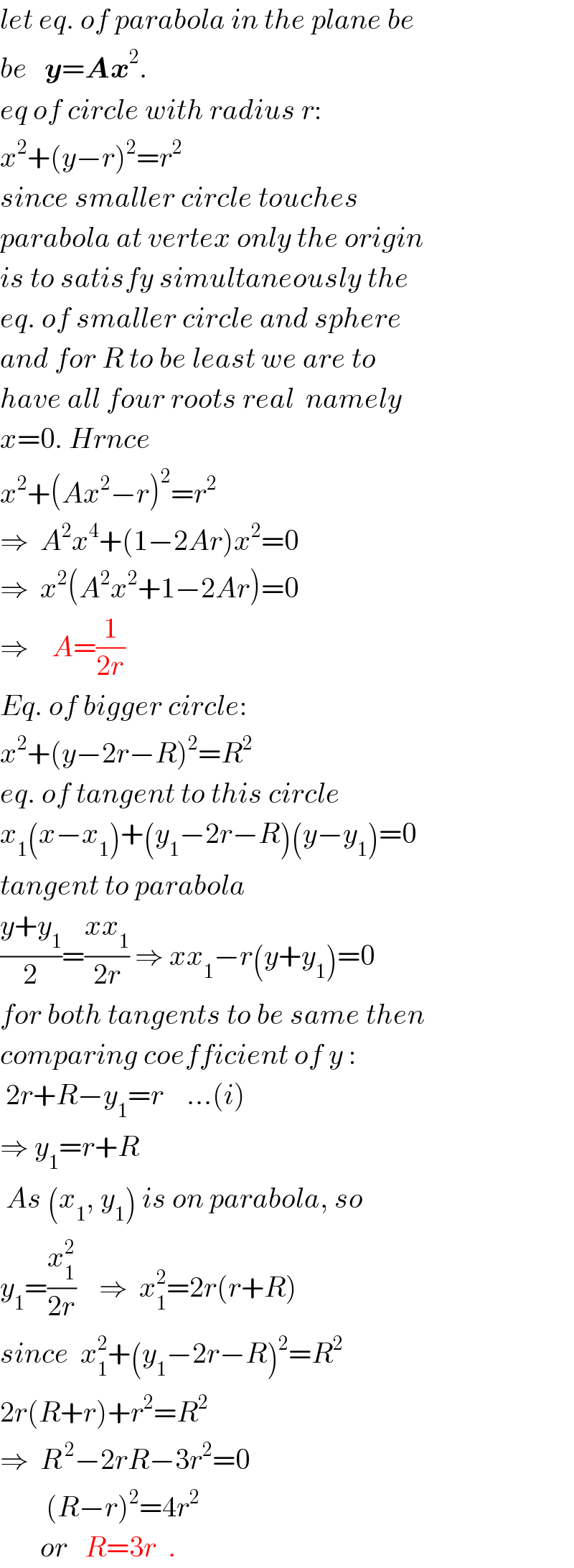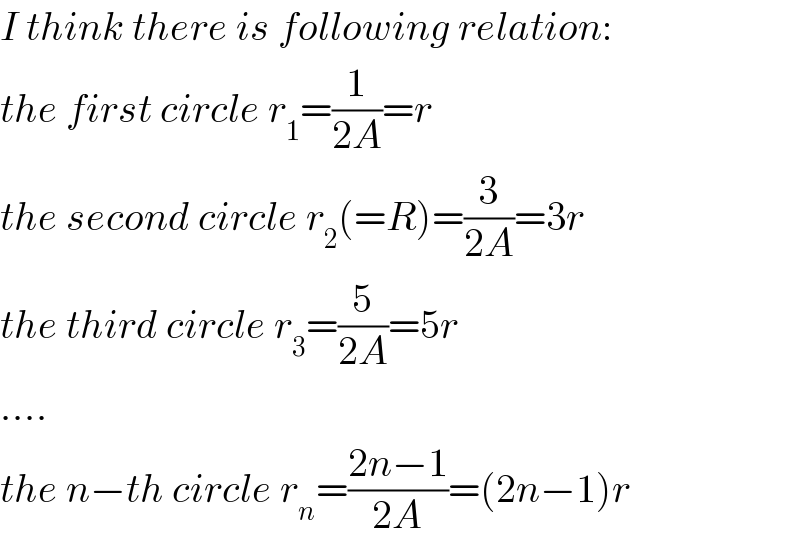
Question and Answers Forum
Question Number 28411 by ajfour last updated on 25/Jan/18

Commented by ajfour last updated on 25/Jan/18

Answered by ajfour last updated on 25/Jan/18

Commented by mrW2 last updated on 25/Jan/18

Commented by ajfour last updated on 26/Jan/18

Answered by mrW2 last updated on 25/Jan/18
![let the eqn. of parabola be y=ax^2 eqn. of circle r: x^2 +(y−r)^2 =r^2 x^2 +(ax^2 −r)^2 =r^2 a^2 x^4 −(2ar−1)x^2 =0 x^2 [a^2 x^2 −(2ar−1)]=0 x=0 x^2 =((2ar−1)/a^2 ) so that the circle touches the parabola only at one point x=0, ⇒2ar−1≤0 ⇒2ar≤1 eqn. of circle R: x^2 +(y−2r−R)^2 =R^2 x^2 +(ax^2 −2r−R)^2 =R^2 a^2 x^4 −[2a(2r+R)−1]x^2 +4r(r+R)=0 Δ=[2a(2r+R)−1]^2 −16a^2 r(r+R)=0 4a^2 (2r+R)^2 −4a(2r+R)+1−16a^2 r^2 −16a^2 rR=0 16a^2 r^2 +4a^2 R^2 +16a^2 rR−8ar−4aR+1−16a^2 r^2 −16a^2 rR=0 4(aR)^2 −4(aR)−(8ar−1)=0 aR=((4+(√(4^2 +4×4(8ar−1))))/(2×4))=((1+(√(8ar)))/2) R=((1+(√(8ar)))/(2ar))×r=((1+(√4))/1)r=3r](Q28418.png)
Commented by ajfour last updated on 25/Jan/18

